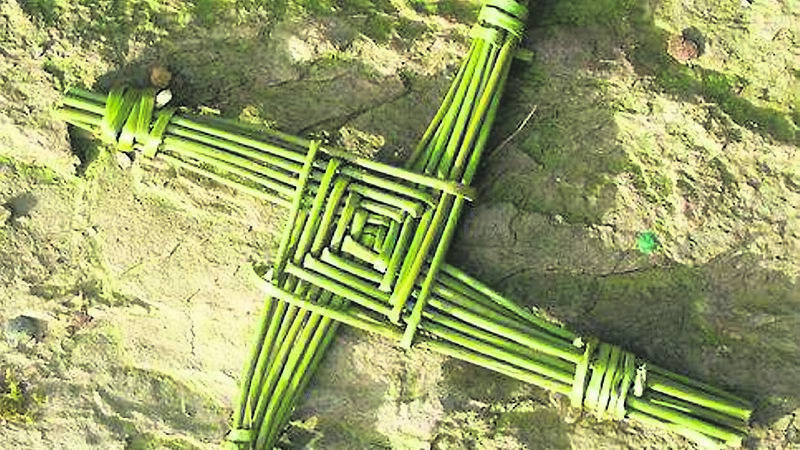A feast of history surrounding the life and times of St Brigid

The Agia Marina Chapel was built in the 12th century and is located near the village of Deryneia, in a small valley they say once looked like a piece of Paradise. I think it still does.
Outside, next to the chapel, is the ‘palloura’, a thorn bush, which looks more like a small tree than a bush. That’s where pieces of clothing from sick children were hung, in the hope they would get better.
I say ‘were’, but that practice still goes on today. Even though the area is controlled by the United Nations and is officially out of bounds to civilians, the locals regularly gain entry to keep up this tradition.
I always admired that tree whenever I passed it and often stopped to look at the pieces of cloth and wonder about the story behind each one. I think it’s a lovely tradition and it’s only recently I discovered we had something similar going on here in Ireland. I don’t know if it still exists but, to begin with, we have to back in time to the days of St Brigid.
I remember as children in primary school, we were given reeds or rushes or something and we were shown how to make this cross. You know the one I’m talking about. It was a standard bearer in RTÉ for years and there was a time when every house in the country had one hanging up somewhere within the four walls.
The crosses considered to be a good luck charm, just like the horseshoe.
Some people still hang them over the door or elsewhere around the home, to bring good luck and also to protect the occupants from fire and hunger.
In the old days, the crosses were replaced at the end of the year with new ones and the old ones were burned in the fire. In some cases, people with thatched roofs put their old crosses under the thatch and it was said you could tell the age of the cottage by the number of crosses in the roof.
Apparently, the cross was originally designed by St Brigid as she sat by the sick bed of a dying pagan - it may even have been her father - soothing him with stories about her faith and her unwavering trust in God.
St Brigid was a formidable young lady who eventually became the patron saint of babies, blacksmiths, boatmen, cattle farmers, children whose parents are not married, children whose mothers are mistreated by the children’s fathers, dairymaids, dairy workers, fugitives, Ireland, Leinster, mariners, midwives, milkmaids, nuns, poets, the poor, poultry farmers, poultry raisers, printing presses, sailors, scholars, travellers, and watermen. Not a bad CV.
Brigid was born in Dundalk, Co. Louth, in 450 AD, to one of Ireland’s first Christians, a woman who had apparently been baptised by St Patrick himself.
Her father was a wealthy pagan farmer, and she spent her earlier life cooking, cleaning, washing and tending the animals on the farm. She showed signs of generosity, compassion and holiness form a young age and regularly annoyed her father by giving away their food to those in need.
Her father was running out of patience, so as soon as Brigid reached 18 years of age, he set out to find a husband for her. She had other ideas though and decided she wanted to devote her life to taking care of the poor, sick and elderly instead.
She built a small convent next to an oak tree to begin with, and that eventually grew into a monastery. As her community grew so did her reputation for healing the sick. People came from far and wide in search of a cure. They would often tie a piece of clothing belonging to a sick person to the tree in the hope of securing a miracle and she is reputed to have performed a few, which resulted in her ultimately reaching sainthood.
The Feast of St Brigid was declared in her honour, and tradition has it that on that day, people would leave small pieces of cloth or ribbons on their windowsills, so that as the saint crossed through the country on the eve of her feast, she would touch them, endowing them with special curative properties to ward off illness and pain in both humans and animals.
As word of St Brigid’s kindness, generosity and talent for healing spread, a king went to see her. She asked him if he would gift her as much land as her cloak would cover. Laughing at Brigid’s small cloak, the King agreed, but when Brigid’s four sisters took the cloak and began turning in circles with it, it grew and spread in all directions until it covered the whole of Leinster.
That’s where ‘Brat Bride Ort’ (Brigid’s cloak be upon you) comes from. The blessing invokes the protection of Brigid’s cloak. So, for the week that’s in it, Brat Bride Ort.







 App?
App?




